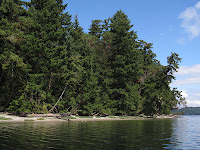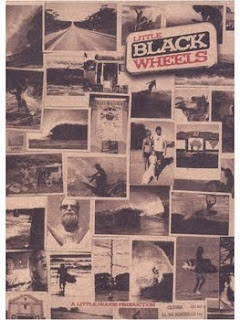This is the twenty-third update by the Audubon Alliance for Coastal Waterbirds (AAfCW) for the 2012 season. It includes reports of Piping Plover, American Oystercatcher, Least Tern, and Common Tern received from 12:00 p.m. on August 13 through 12:00 p.m. on August 20 with sightings of birds spanning August 13 through August 20 by our staff and volunteers.
Survey and monitoring updates:Piping PloverVolunteer and staff surveys:1 adult, 6 juveniles at Griswold Point on 8/13
1 adult, 2 chicks at Harkness Memorial State Park on 8/13
1 juvenile at Sandy/Morse Points on 8/15
1 juvenile at Sandy/Morse Points on 8/15
1 adult, 1 chick at Harkness Memorial State Park on 8/15
1 adult, 1 juvenile at Griswold Point on 8/15
1 adult, 1 chick at Harkness Memorial State Park on 8/15
1 juvenile at Sandy/Morse Points on 8/17
1 adult, 3 juveniles at Harkness Memorial State Park on 8/18
1 adult at Long Beach on 8/19
American OystercatcherVolunteer and staff surveys:1 pair at Griswold Point on 8/13
1 pair, 1 juvenile at Sandy/Morse Points on 8/13
2 pairs, 1 chick at Sandy/Morse Points on 8/14
1 pair, 1 chick at Milford Point on 8/14
1 pair, 1 adult, 1 chick at Milford Point on 8/14
3 pairs, 2 chicks at Sandy/Morse Points on 8/15
2 adults, 1 chick at Sandy/Morse Points on 8/15
1 pair, 1 chick at Milford Point on 8/15
2 pairs, 1 chick at Milford Point on 8/15
2 pairs, 1 adult, 1 chick at Sandy/Morse Points on 8/15
2 adults at Pine Islands on 8/16
1 pair, 1 chick at Bluff Point on 8/16
4 adults at Pear Tree Point Marina on 8/16
3 adults at Vincent Island on 8/16
4 adults at Greenway Island Jetty on 8/16
1 pair, 1 juvenile at Sandy/Morse Points on 8/17
1 pair, 1 chick at Sandy/Morse Points on 8/17
1 pair, 1 juvenile at Milford Point on 8/17
3 adults at Bluff Point on 8/17
2 adults at Sandy/Morse Points on 8/17
1 pair at Sheffield Island on 8/17
1 pair at Harkness Memorial State Park on 8/18
1 pair, 1 juvenile at Bluff Point on 8/18
2 pairs at Milford Point on 8/19
1 pair, 1 chick at Sandy/Morse Points on 8/19
1 adult at Menunketesuck Island on 8/19
1 pair, 1 adult, 1 juvenile at Stratford Point on 8/19
24 adults, 4 juveniles at Stonington Point on 8/20
1 pair, 1 juvenile at Sandy Point Stonington on 8/20
2 adults at Menunketesuck Island on 8/20
3 adults at Salt Island on 8/20
Least Tern Volunteer and staff surveys:41 adults, 4 chicks, 30 juveniles at Griswold Point on 8/13
2 adults at Harkness Memorial State Park on 8/13
17 adults, 9 juveniles at Long Beach on 8/13
30 adults, 7 juveniles at Sandy/Morse Points on 8/13
11 adults, 12 juveniles at Long Beach on 8/14
3 adults at Sandy/Morse Points on 8/15
1 adult at Silver Sands State Park on 8/15
6 adults, 4 chicks at Griswold Point on 8/16
2 adults at Bluff Point on 8/16
15 adults, 17 juveniles at Long Beach on 8/16
1 adult at Bluff Point on 8/18
1 adult, 1 juvenile at Stratford Point on 8/19
Common TernVolunteer and staff surveys:2 adults at East Broadway Milford on 8/13
34 adults, 10 juveniles at Griswold Point on 8/13
7 adults, 3 juveniles at Long Beach on 8/13
2 adults at Silver Sands State Park on 8/14
50 adults, 8 juveniles at Milford Point on 8/14
22 adults, 8 juveniles at Long Beach on 8/14
1,000 adults/juveniles at Stratford Point on 8/14
41 adults, 18 juveniles at Milford Point on 8/15
223 adults, 71 juveniles at Sandy/Morse Points on 8/15
200 adults/juveniles at Sandy/Morse Points on 8/15
2 adults at Griswold Point on 8/16
110 adults, 55 juveniles at Pine Islands on 8/16
2 adults at Silver Sands State Park on 8/16
50+ adults, 27 juveniles at Long Beach on 8/16
380 adults, 42+ juveniles at Sandy/Morse Points on 8/17
800 adults/juveniles at Stratford Point on 8/17
10 adults at Bluff Point on 8/17
600 adults/juveniles at Stratford Point on 8/18
4 adults at Harkness Memorial State Park on 8/18
3 adults, 52 adults/juveniles at Bluff Point on 8/19
700 adults/juveniles at Stratford Point on 8/19
This concludes update #23 through 8/20/12 as of 4:00 p.m.
Audubon Alliance for Coastal Waterbirds, Audubon Connecticut and the Connecticut Audubon Society partnering to improve conditions for coastal waterbirds in Connecticut.

















































